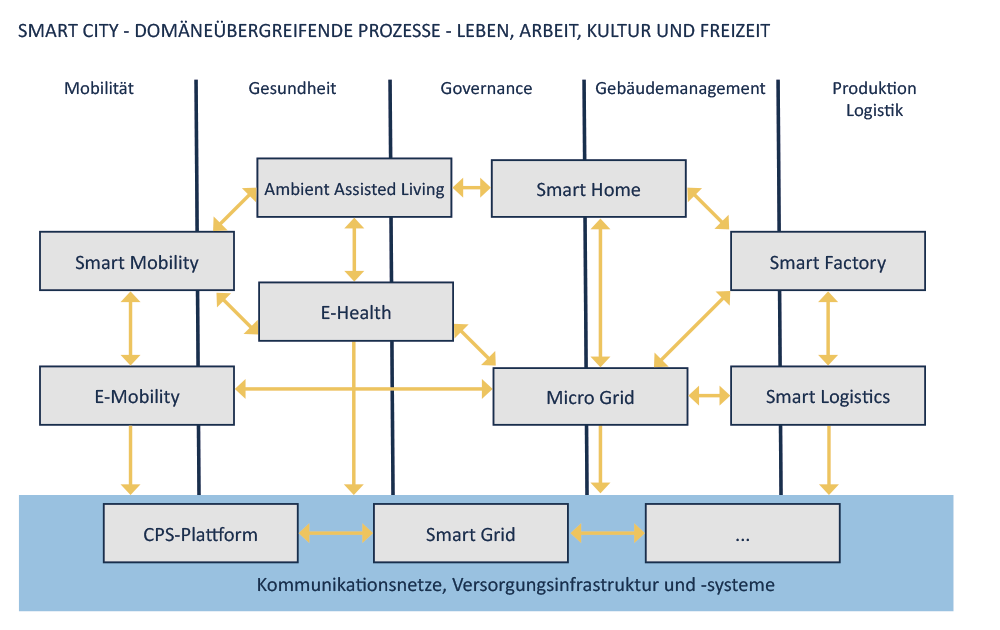+49 89 44 388 99 50
contact@smart-applications.com
Also use our contact form.
Cyber-physical systems (abbr. CPS; cyber-physical systems) are characterized by a profound linking between software and information logistics components (cyber *) and mechanical, electronic, and sensory components (* physical). Thereby, the controlling and also the transfer and exchange of data takes place in real-time.
These network services can be either realized locally or worldwide via cloud services or the internet. Thanks to their autonomy and simultaneous networking, they are the logical link between the development of embedded systems and the Internet of Things - and thus its basis and enabler.
Cyber-physical systems always consist of a combination of different elements. The basics come from a wide range of engineering and natural sciences, such as electrical engineering, mechanical engineering, robotics, and computer science.
Usually, these systems consist of the following components:
In general, CPS can be used both stationary and mobile. Today's key benefits are the use in the most modern industrial plants, intelligent control and operation of power grids (smart grids), medical technology (also: e-health) as well as environmental monitoring and warning systems (tsunami/earthquake warning systems). An ever-increasing focus - for German and international car manufacturers - is moving towards smart mobility and, in particular, autonomous driving.
A major challenge in developing and using cyber-physical systems lies in their high level of complexity. These highly sensitive systems can become very susceptible to faults due to the dependencies that arise in the overall system if individual components fail. Individual incidents can therefore bring the entire system to a halt.
One of the main advantages - automation and increasing efficiency through continuously adapting systems without human intervention - requires another property that must be prevented as far as possible through construction/architecture and programming - i.e. the general CPS design: The systems could make wrong decisions based on correct or incorrect data. In the first case, this could be an unintended event, in the second, for example, the (partial) failure of components or sensors, as already mentioned in the previous paragraph, or even deliberate manipulations by physical or hacker interventions.
In highly developed CPS people would only have control and hardly any control functions in the future. Also, a linkage of systems from various areas to the Smart City is already in full swing. A combination of smart and e-mobility, for example, or the data exchange between your own smart home, microgrid and smart grid is already possible in some areas and will continue to spread. Smart production & logistics systems can already be seen at industry leaders and are developing rapidly. The need for flexibility and adaptability in today's VUCA environment (volatility, uncertainty, complexity, ambiguity) and ongoing technical progress will tend to further accelerate the megatrend of self-controlling cyber-physical systems.
Interlocking CPS-scopes of applications and general management processes.

Soon you will find here: apps on the subject of cyber-physichal systems